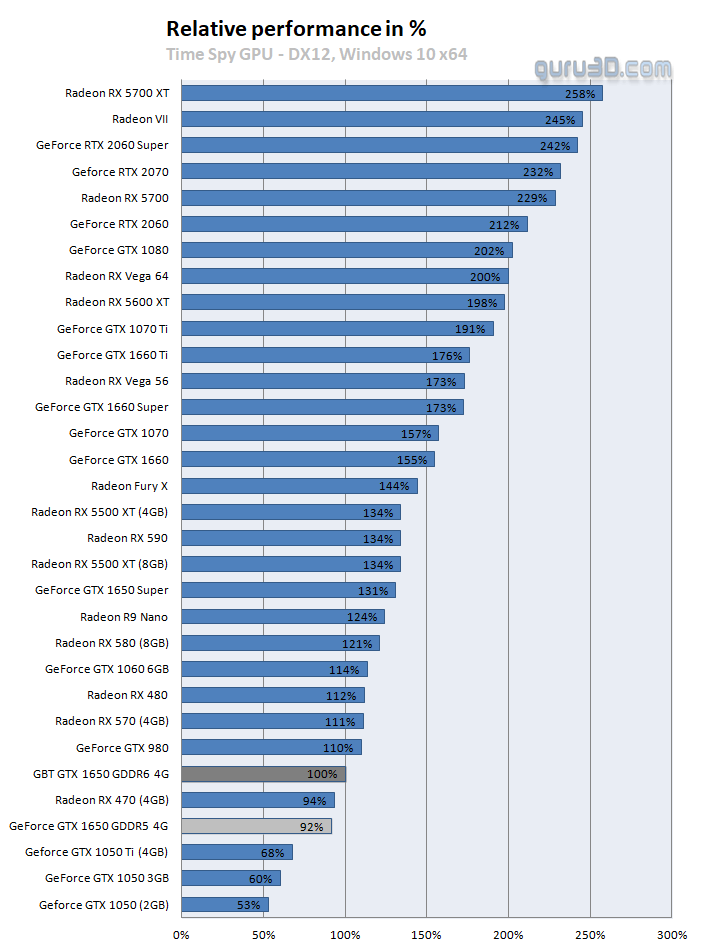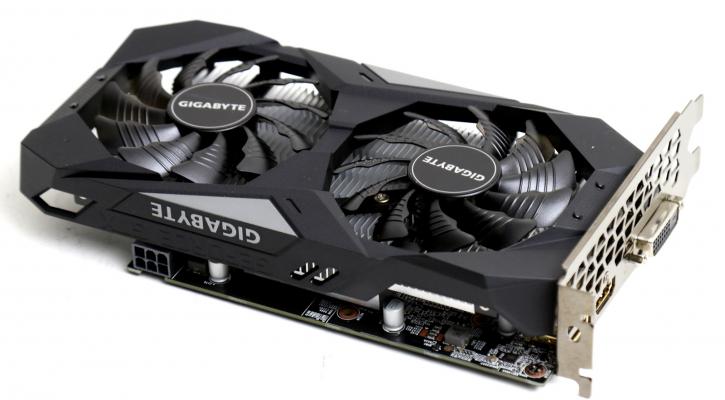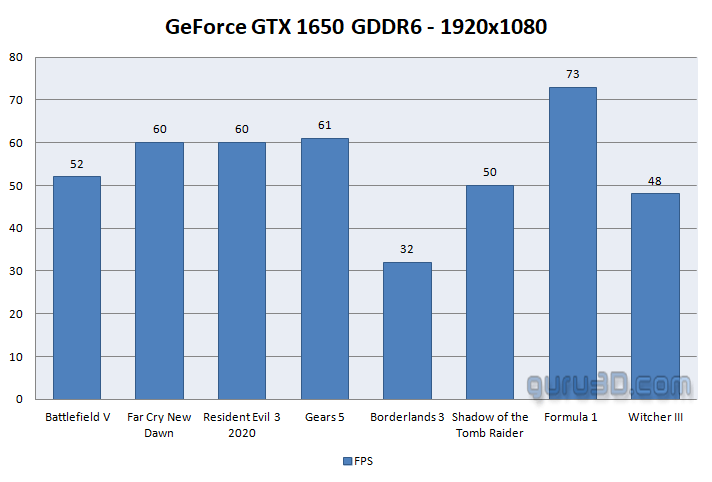Conclusion
Final words and verdict
Now before we dive deeply into the conclusion let me make something clear, if you think the performance benefit over the GDD5 model comes from the new GDDR6 memory, the answer is mostly no. Remember the Gigabyte Windforce we tested is an OC model, running that boost clock of 1710 MHz. Coming from a reference GTX 1650 GDDR5 you are looking at roughly 3 maybe 4% extra perf for a GDDR6 model clocked at the same frequencies, and this OC version bumps that up a small notch further thanks to a higher Boost frequency, in total you're looking at:
All things considered though, the GDDR6 models will be the better buy. You still will get a tiny bit of a performance bump over the GDDR5 models due to memory bandwidth. NVIDIA tried to compensate that by lowering the reference boost clocks for the G6 model just a fraction, balancing performance. However 1+1=3, you now have the same tweaking potential with more memory bandwidth, so when tweaked these cards simply put have far more to offer, unfortunately, this card had a locked power limiter, so it's clocking back once it reaches its power target. Also, we feel that NVIDIA should have probably made the GDDR6 model from the very start, as this is getting messy with all these SKUs. So when you clock them the same, the overall performance was more or less similar to the reference product with a slight advantage for GDDR6 model. At that 150 USD price bracket performance remains to be very acceptable. Sure, this is entry-level stuff and not a 60FPS/Full HD product, but they are easy to use cards alright -- just pop them in, install a driver and you're good to go as at 1920x1080 most games will run fine at pretty stringent image quality settings. Currently, pricing is sitting at a 169 USD/EUR marker. The 1080P resolution is the maximum domain of the focus for products like tested today, WQHD not so much obviously. The 4 GB of graphics memory does make a lot of sense for this product. I stated in previous reviews, the GeForce GTX 1650 overall is easy to use the drop-in product. This card is very handy for entry-level builds with decent enough 1080p performance for most games in combination with the need for silence. Although a dying breed with smart-TVs, it's an excellent HTPC card really (at least for decoding), then again so is any modern APU that comes with included CPU cores at the sole price of these graphics card.
Aesthetics
The looks are fine really. The card does not come with much fancy RGB options. There's one logo at the top side and then the sizable cooler makes this product look as to what it is, compact in size. The dual-fan cooler has nice dark aesthetics. So overall the card is not hyper fancy, but an okay looking card.
Cooling 'n acoustics
With very little airflow, the card runs roughly 65 Degrees C and starts to throttle. Give it a little ventilation in the chassis and you will be hard-pressed to see it passing that number. The card itself is inaudible, your airflow created, however, will make some noise. So it is but subjective to give this a rating. There was not any audible coil noise we heard either.
Concluding
If NVIDIA can get their prices in line for the new GDDR6 SKUs then the 1650 GDDR6 series is an 'okay' addition in a 150 USD segment. As you can see, performance at Full HD is quite respectable. I mean look at this:
At 2560x1440 you'll quickly run out of horsepower and graphics memory. Inbetween that 4GB GDDR5 and GDDR6 there is not much of a performance difference when you look at it solely from reference clocked metrics and numbers. However, It's the same GPU that NVIDIA downclocked a little to match the G6 memory benefit. That's tweaked out in seconds and you can gain a good 10% maybe even 15% extra performance when you compare to the G5 reference performance. Unfortunately, tweaking remains restricted, as the power limiter was not able to be increased, so the second the card hits it's power envelope it'll start to downclock to match the power targets. It all is becoming to be a confusing flurry of SKUs though, but if you are in the market for a graphics card with a 150 USD budget, this one actually can make sense. The card itself ran fine, not silent not noisy, good temperatures and a nice ability to tweak, albeit limited by the power limiter. Whether or not you find it worth the money is for you to decide. All in all, it's a handy little card for the Full HD gaming domain. It might have a limited audience but at this power envelope we see very little wrong with it, we'll have to wait and see how pricing pans out in etail though, but if pricing levels at a 150 USD marker we can recommend it.
Recommended Downloads
- Sign up to receive a notification when we publish a new article
- Or go back to Guru3D's front page




